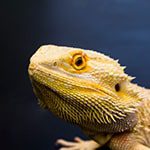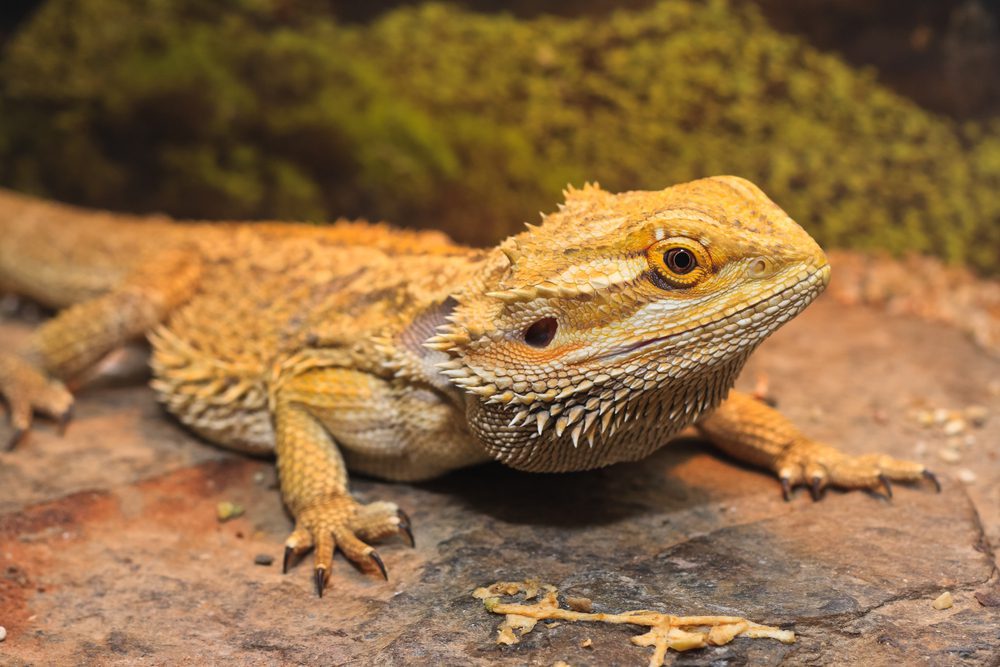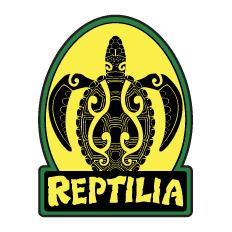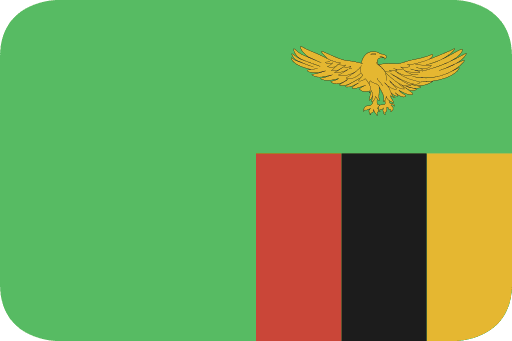
Bearded Dragon
Common Name: Bearded Dragon
Scientific Name: Pogona vitticeps
Type: Reptile
Diet: Omnivore
Average Life Span: 10 – 15 years
Size: Up to 24 inches
Weight: 280 – 500 grams
About Bearded Dragons

The Bearded Dragon is tan to yellow in color. The dragon has the ability to flare out the skin in the throat region when threatened or territorial. Its body has a flattened appearance, which becomes even more pronounced if alarmed. There are spines on the throat, sides of the head, and sides of the body. The Bearded Dragon has a wedge-shaped head and a tail that is almost as long as the body.
It is difficult to distinguish males from females among hatchlings and juveniles. When they become adults, sexual differences become more apparent. The males generally have larger heads and larger, darker beards. The femoral pores of males also help to distinguish them from females.
Size and Behaviour
Adults of this species can reach a total length of up to 60 cm (24 in), with the tail accounting for more than half. Sexes are not strongly dimorphic, but males can be distinguished from females as males have a wider cloacal opening, the base of the tail is wider, the head is usually larger with a larger beard and possess hemipenes.
Males also have more pronounced femoral pores than females (these can be seen as waxy bumps on the underside of the back legs). Bearded dragons vary widely in color, including brown, reddish-brown, red, yellow, white, and orange. They are capable of undergoing moderate changes in the shade of their color to help regulate temperature.
Specialized scales along both sides of the throat, neck, and head form many narrow spines which run down the side of the body to the tail. When feeling threatened, a bearded dragon will flatten its body against the ground, puff out its spiny throat and open its jaws to make itself appear larger. The bearded dragon is so named because of the pouch-like projection (also called the guttural pouch) on the underside of the neck and chin area which typically turns darker than the rest of the body. It also boasts spiny projections. Both of these characteristics appear similar to a human’s beard.
Diet & Nutrition
Bearded Dragons are omnivores, meaning they need a balanced diet of meat and vegetable matter. Hatchlings eat mostly small insects. As they grow, they will start to eat more vegetable matter. The diet of a juvenile dragon (2-4 months of age) will consist of approximately 80% insects and 20% greens. Young dragons should be fed 2-3 times daily. Young bearded may nip at the tails and toes of their cage mates, if insufficient food is fed.
Meat: Meat can include pinky mice (for adults) and insects such as:
• Crickets; pinhead crickets for juveniles
• Mealworms
• Wax worms – high in fat, so feed sparingly
• King worms
• Earthworms
• Cockroaches
Preparing insects for food: Freshly molted insects are easier for the Bearded Dragon to digest. Feeder insects should be coated with a calcium supplement (powdered calcium carbonate or calcium gluconate) 3-5 times per week for adults; every day for juveniles. Insects should also be “gut-loaded”, which means the insects are fed nutritious and vitamin-rich foods before they are given to the Dragon.
Good foods to feed the insects include ground legumes, cornmeal, carrots, sweet potatoes, collard greens, mustard greens, broccoli, spinach, apples, oranges, cereals, and rolled oats. There are also commercial products rich in calcium and vitamins which can be fed to the insects. You may purchase insects or catch them yourself!.
Insects should be fed by placing them in a small bowl. After feeding, check that none of the insects escaped and fouled the water supply in the cage. To improve hygiene, some owners prefer to have a separate cage for feeding the meat-based portion of the diet.
Food particle size: For Bearded Dragons, it is very important that the size of food be proportional to the size of the animal. Malnourishment, seizures, and intestinal blockages can occur if hatchlings and juveniles are fed insects that are too large for them to capture or digest.










